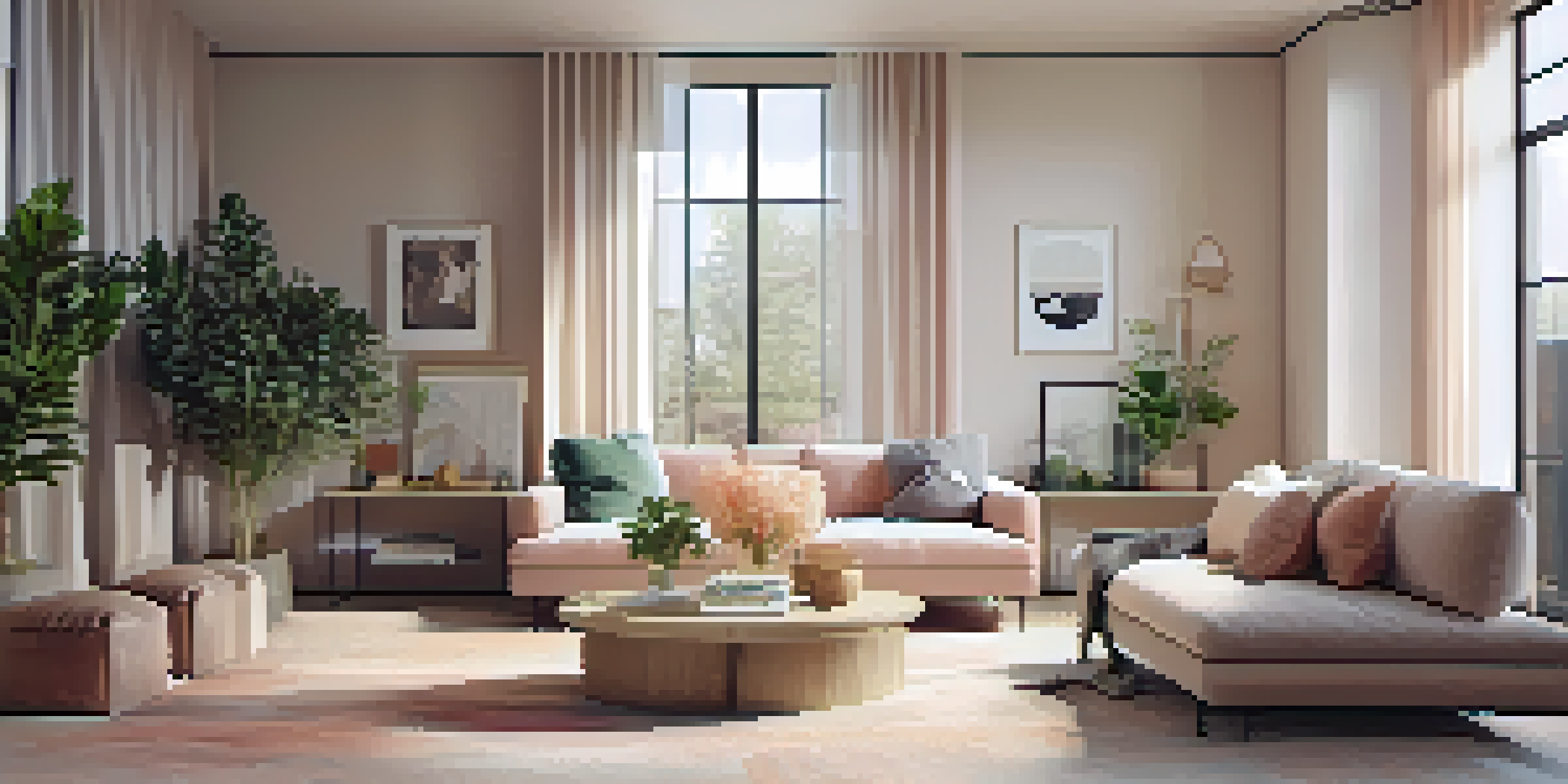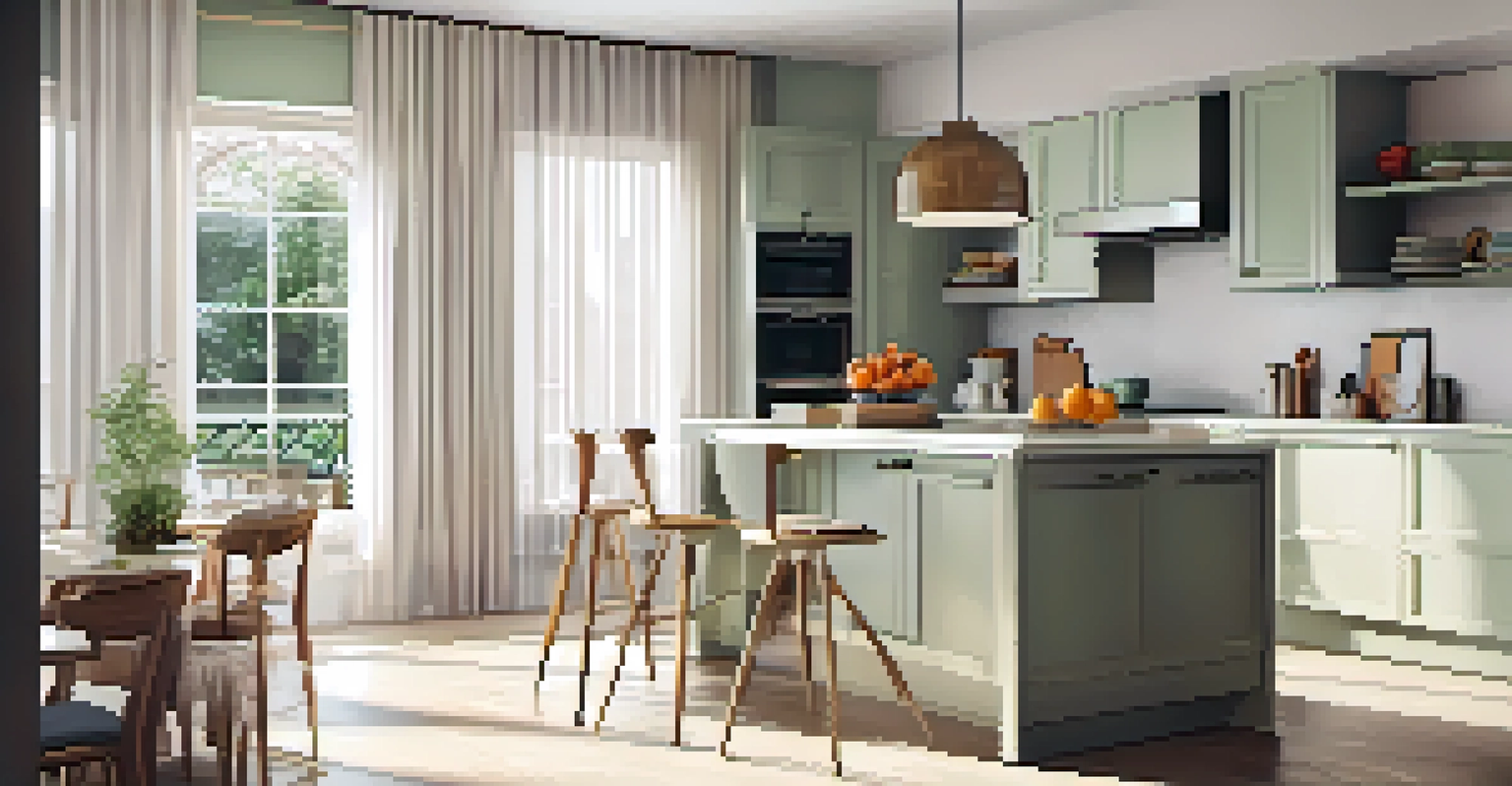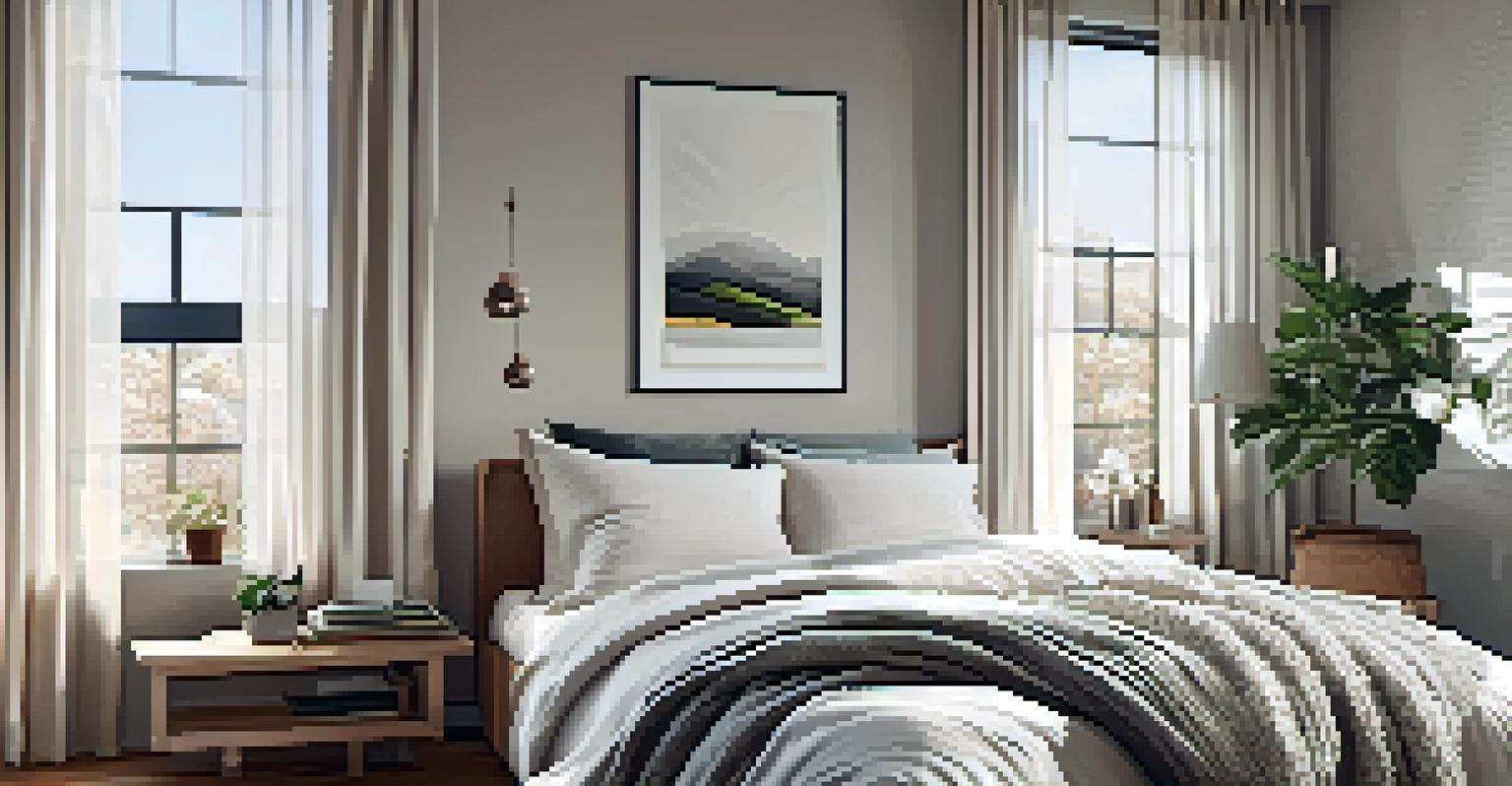Staging for Urban Living: Techniques for Compact Spaces

Understanding the Importance of Staging in Urban Living
Staging is the art of preparing a home for sale, and it’s especially crucial in urban environments where space is at a premium. When potential buyers walk into a compact space, they need to envision themselves living there, and staging helps create that emotional connection. A well-staged home not only highlights the best features but also makes the space feel larger and more inviting.
Staging a home is not about impressing buyers, but about helping them envision their future in that space.
In bustling cities, where competition is fierce, staging can be a game-changer. It allows sellers to differentiate their property from others on the market, making it more memorable. The right staging can even lead to quicker sales and higher offers, making it a worthwhile investment for anyone looking to sell in an urban setting.
Moreover, effective staging goes beyond just aesthetics; it communicates lifestyle. By showcasing how to maximize a small space, staging can help buyers see the potential of a property, making it feel like home before they even move in.
Choosing a Color Palette to Enhance Small Spaces
When staging compact urban spaces, color plays a pivotal role in creating an illusion of openness. Lighter shades, such as whites, creams, and soft pastels, can make rooms feel airier and more expansive. Conversely, darker colors can absorb light, making a space feel smaller and more enclosed.

Consider incorporating a cohesive color palette throughout the space. This approach creates a seamless flow that guides the eye from one area to another, enhancing the perception of space. For instance, using similar tones in the living room and kitchen can visually connect these areas, making them feel more integrated.
Staging Boosts Urban Home Sales
Effective staging creates emotional connections, highlights property features, and can lead to quicker sales and higher offers in competitive urban markets.
Accent colors can also be strategically used to draw attention to specific features or areas. For example, a bold throw pillow or piece of art can add personality without overwhelming the space, balancing vibrancy with the need for openness.
Maximizing Natural Light for a Bright Atmosphere
Natural light can transform a compact space from cramped to cozy. When staging, it's essential to highlight windows and ensure that curtains or blinds are kept light and airy. Sheer fabrics can allow light to filter through while still providing some privacy, making the room feel bright and inviting.
A well-staged home can make a lasting impression, opening doors to both hearts and offers.
Mirrors are another fantastic tool to enhance natural light in smaller spaces. Placing a mirror opposite a window can reflect light and create the illusion of depth, making the room appear larger. Additionally, mirrors can serve as a decorative element, adding style while optimizing light flow.
Don’t forget about artificial lighting, either! Layering different light sources, such as floor lamps, table lamps, and wall sconces, can create a warm and inviting atmosphere, especially during evening showings. A well-lit space is not only more welcoming but also helps potential buyers envision their own lives in the home.
Decluttering: The Key to Open, Inviting Spaces
In any urban setting, clutter can quickly turn a charming space into a chaotic one. When staging, it’s vital to declutter every room, keeping only essential items and a few carefully chosen decorative pieces. This practice not only showcases the space itself but also allows buyers to envision their furniture and belongings in the home.
Consider utilizing storage solutions that keep items out of sight while remaining accessible. Baskets, decorative boxes, and under-bed storage can help maintain an organized appearance without sacrificing functionality. This approach also demonstrates how to effectively use the space, which is especially appealing in smaller homes.
Color and Light Enhance Spaces
Utilizing lighter color palettes and maximizing natural light can create an illusion of openness, making compact urban homes feel larger and more inviting.
Lastly, a decluttered space conveys cleanliness and care, which are crucial when selling a home. It gives the impression that the property has been well-maintained, making it more attractive to prospective buyers.
Selecting Furniture That Fits and Flatters
Choosing the right furniture is essential when staging for compact urban spaces. Opt for pieces that are appropriately scaled to avoid overwhelming the room. For instance, a sleek sofa with clean lines can create an open feel, while bulky furniture may make the space feel cramped and uninviting.
Multi-functional furniture is a lifesaver in small spaces. Consider pieces like ottomans with storage, a fold-out dining table, or a bed with drawers underneath. These items not only save space but also showcase practicality, allowing potential buyers to see how they can maximize their living area.
Arranging furniture thoughtfully can also make a huge difference. Create cozy conversation areas or clear pathways to guide movement through the space. This thoughtful layout not only enhances flow but also helps buyers visualize how they would use the home day-to-day.
Incorporating Textures for Depth and Interest
In compact spaces, textures can add depth and interest without overwhelming the senses. Layering different materials—such as soft throws, woven rugs, and smooth ceramics—can create a visually appealing environment. This approach keeps the space dynamic while still feeling cohesive.
Consider using textured wall art or decorative pillows to introduce a tactile element. These small additions can make a big impact, helping to personalize the space and create a welcoming atmosphere. For example, a chunky knit blanket draped over a chair can add warmth and comfort to an otherwise sleek setting.
Decluttering is Essential
Keeping spaces organized and free of clutter allows potential buyers to envision their own belongings in the home while conveying cleanliness and care.
By thoughtfully integrating textures, you can enhance the overall aesthetic of a small space. The result is a home that feels inviting and lived-in, helping potential buyers imagine themselves enjoying the space without feeling overwhelmed.
Final Touches: Making the Space Feel Like Home
The final touches in staging are what truly make a space feel lived-in and inviting. Consider adding fresh flowers or a tasteful bowl of fruit to the kitchen counter, which can breathe life into the area. These small, simple elements can create a warm and welcoming vibe that resonates with potential buyers.
Incorporating personal touches, such as books on a coffee table or a cozy throw on the sofa, can evoke a sense of comfort. However, be careful not to over-personalize; the goal is to make the space feel relatable while allowing buyers to envision their own items in the home.

Ultimately, these finishing details can leave a lasting impression. A home that feels warm, welcoming, and thoughtfully staged will resonate more with buyers, increasing the chances of a successful sale in an urban market.